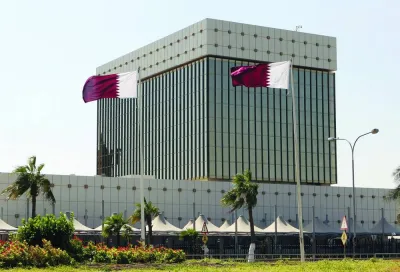The Middle East and North Africa region’s reserves total nearly $875bn, wealth management firm Indosuez said, and noted that the considerable amount of dollar reserves held by the Mena countries provide them with a reason to work together and mutually support each other.
Indosuez expects this to “contribute towards a rethinking” around the exchange rate arrangements of Mena countries, which are far from a floating rate regime. However, it notes that the time does not seem to be ripe for these countries to consider a currency union.
Dr Paul Wetterwald, chief economist, Indosuez Wealth Management business line, said, “Additionally, considerable uncertainties continue to characterise the current US administration’s real impact on the global economy. The key issues for Mena economies are the strengthening of the US dollar, the possible rarefaction of the currency outside the United States following the repatriation of war chests by US businesses and the rise in interest rates. These developments would negatively impact the debt refinancing of some countries lacking natural access to the dollar through regular export flows.”
Of the $875bn Mena reserves slightly less than $500bn are held by Saudi Arabia. Despite this seeming a huge size, it is dwarfed by the holdings of various central banks in mature economies.
As of June 30, 2017 the US Federal Reserve balance sheet reached $4,46bn, of which $2.46bn was in US Treasuries and $1.77bn in mortgage backed securities.
At the same date, the European Central Bank balance sheet’s size was $4,800bn and the Swiss National Bank balance sheet stood at approximately $780bn in end-May.
As for the Bank of England, its balance sheet amounted to $531bn as of March 31 this year. A very large proportion of these figures are made of marketable securities, which means that the disposal of a part of these securities by these central banks would potentially impact the financial markets more than a potential sale by Mena monetary authorities.
Dr Wetterwald added: “A country’s current account balance gives us a hint about the resilience of its currency in times of crisis. The stronger is the balance, the less need there is to draw into reserves to defend the currency. The Mena countries’ current account balances have globally deteriorated in tandem with the oil price’s decline.
“Given their size, the sale of Mena reserves to maintain the peg should not by itself provoke a crash; despite likely having a negative impact on financial markets. For this to happen we would need to see other investors selling at the same time, either due to monetary policies of their own (for example mature economies’ central banks) or because of momentum-driven portfolio managements’ strategies from large private investors.”

Wetterwald: Uncertainties continue.


